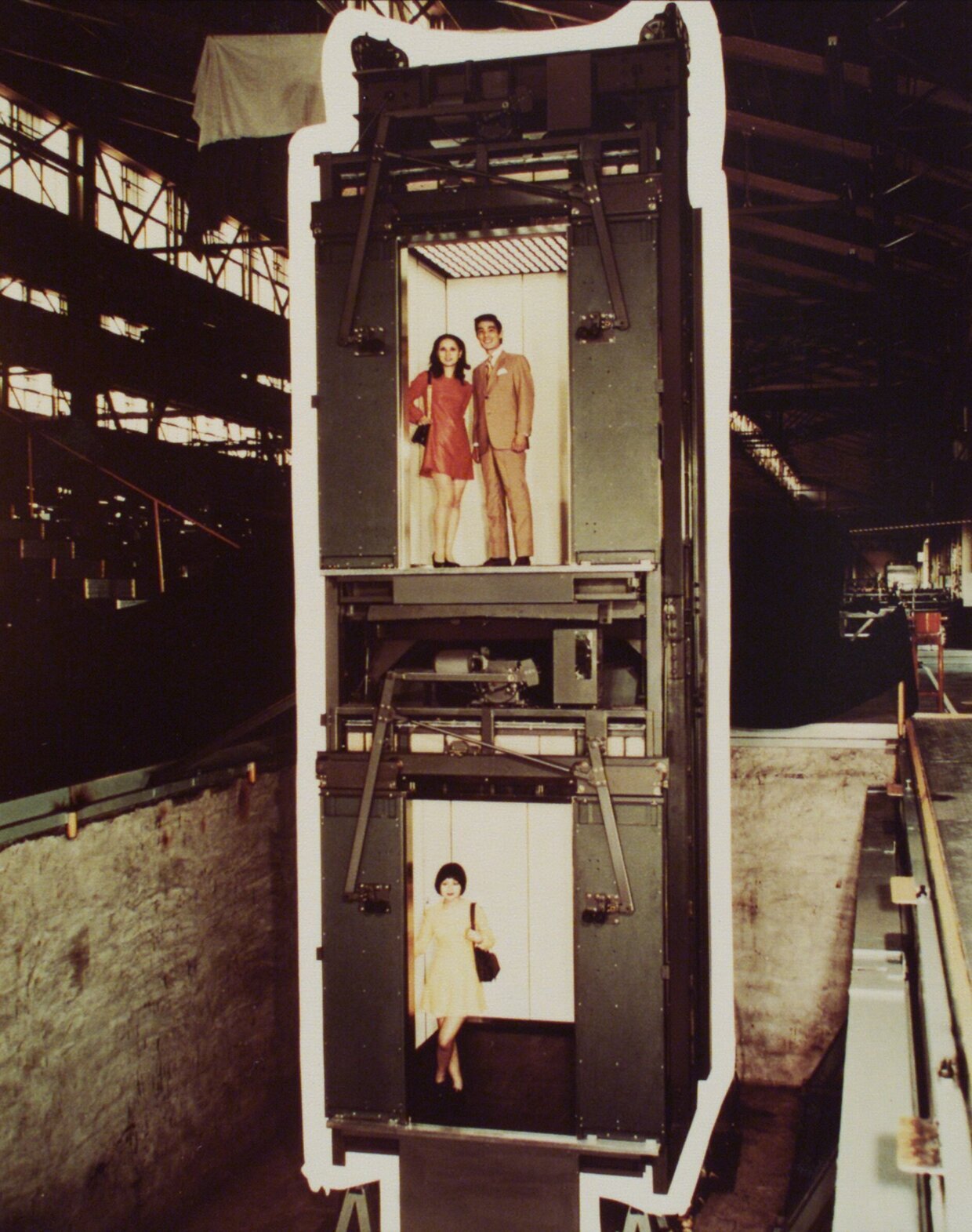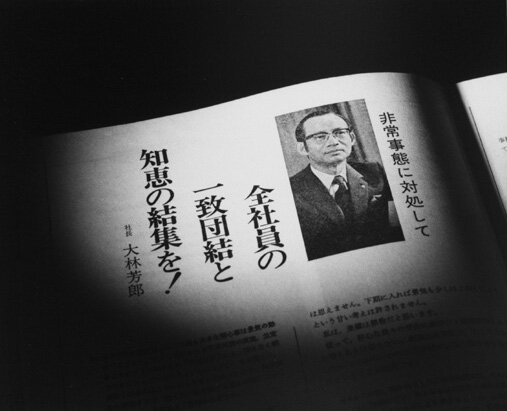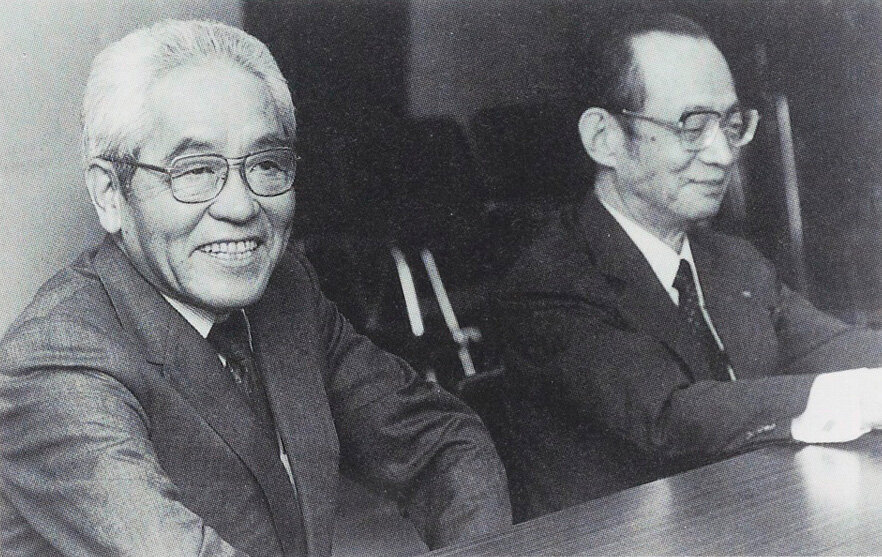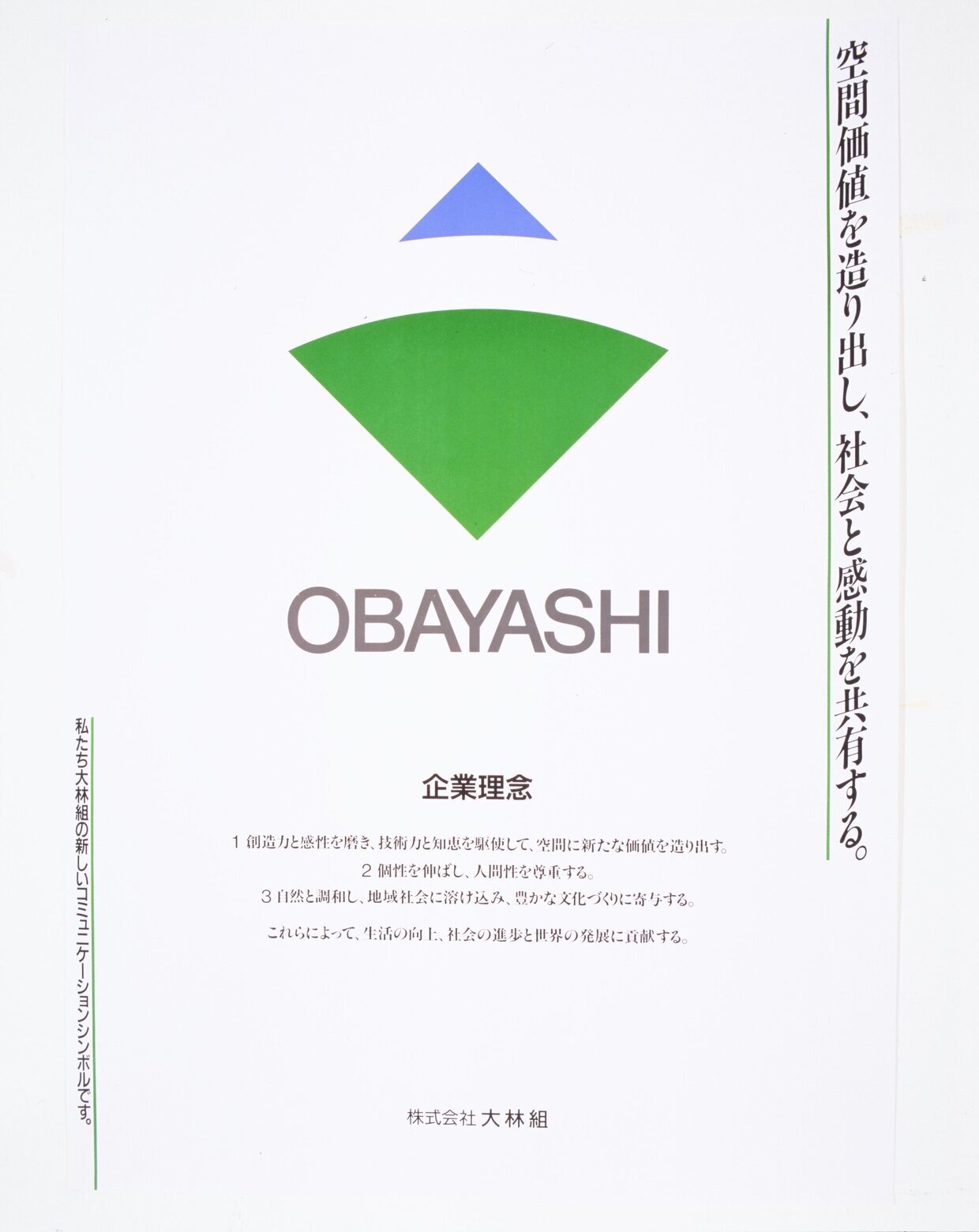Moving the Head Office to Tokyo
In December 1970, the Head Office was moved from Osaka to Tokyo. The Tokyo Branch was located in the Tokyo Obayashi Building (completed in 1961 in Kanda-Tsukasamachi, Chiyoda-ku). The branch had been handling a large volume of business for some time. Moreover, with the locus of economic activity in Japan increasingly centered in Tokyo, the Tokyo Branch assumed still more importance as a center for the company’s national and international operations.
Under the Commercial Code, Obayashi’s main office was registered in Osaka. At the time, the company announced its plans to build the Osaka Obayashi Building, the first high-rise building in Osaka, with a height of 120 meters and 32 floors. Construction began in 1971. With the completion of the building in 1973, the Main Office was moved into the new tower, formalizing Obayashi Corporation’s unique arrangement of having both a Tokyo Head Office and an Osaka Main Office.
But the winds of change pushed the Japanese economy in a different direction, with the transition starting around 1970. The oil crisis caused the prices of construction materials to skyrocket, significantly pushing up construction costs.

President Yoshiro Obayashi Delivers an Important Address
In the midst of the recession that followed the first oil crisis of 1973, President Yoshiro Obayashi delivered an important address to all employees at the beginning of 1975. Entitled “Facing our most challenging year since the war,” the address focused on the situation at the time as well as the future direction for the company. Acknowledging that company operations were reaching a breaking point, the president outlined measures to get through the immediate crisis. In essence, Yoshiro Obayashi was declaring a state of emergency.
In his address, President Yoshiro Obayashi presented guidelines for how the company would go forward. He emphasized that the construction industry was experiencing tough times, faced as it was with a national policy shift that aimed for a soft landing with stable growth after the negative growth experienced by the Japanese economy in 1974. In response to this challenging situation, Obayashi Corporation’s most significant strategy was to increase the number of construction projects it took on. At the same time, the company would strive to streamline operations.

Building a Strong Reputation in the United States
In August 1979, Obayashi Corporation won a contract to construct a portion of the San Francisco sewer system, a project that began in October of that year. This was the first public civil engineering project awarded to a Japanese contractor in the mainland United States.
The ground within the construction zone was soft, and severe environmental restrictions were imposed on the project. Nevertheless, the company bid on project, proposing to deploy an earth pressure balanced tunnel boring machine (EPB-TBM), the first use of this technology in the United States. Even though this was one of the first examples of Obayashi’s use of EPB-TBM technology, its implementation in the project earned high praise from ENR (Engineering News-Record), a leading U.S. construction engineering journal. The project’s success also resulted in Obayashi’s joining forces in a joint venture with another local company for construction of a different section of the same trunk sewer in 1981.
This success was followed by the Strawberry Tunnel in the city of Heber, Utah, a project commissioned by the U.S. Department of the Interior, as well as the Dolores Tunnel in Colorado in 1982. In 1983, the U.S. Department of Energy commissioned a shaft of the Waste Isolation Pilot Plant (WIPP) in New Mexico. Together with an increase in private sector projects in Los Angeles and elsewhere, these projects helped solidify Obayashi’s position in the continental United States.
Between the fiscal years ending in March 1980 and March 1982, Obayashi Corporation enjoyed steady growth in both the number of orders received and net sales, with sharp increases in both income before taxes and profits.
Celebrating the Company’s 100th anniversary in the Midst of an Economic Bubble
Following the second oil crisis, the Japanese economy slipped into recession in early 1980, The economy bottomed out in February 1983, and then entered a period of gradual recovery. At three years in duration, this was the longest postwar recession in Japan up to that point. Despite the recovery, however, demand for construction services remained flat. This construction industry recession was due to a slump in public sector spending and a levelling-off of private sector capital investment. Lean times for the construction industry came to an end in 1986 with the arrival of a major economic boom known as the bubble economy. The losses of the preceding three years were erased, with a rapid increase in demand for construction from 1987 onward. A two-year construction boom started in 1989.
In June 1989, Yoshiro Obayashi, who had served as president for over 45 years since 1943, was appointed chairman, and Takao Tsumuro followed in his footsteps as the company’s fourth president. The new Obayashi Philosophy was rolled out in April 1990 as an expression to both its employees and to the world of the company’s passion and outlook as the twenty-first century approached. This philosophy found its clearest expression in Obayashi’s declaration that it is “a company that respects humanity” by creating spatial value in the built environment. The company introduced a new corporate symbol, colors, and logo to stand as tangible expressions of the spirit of this declaration. A long-term management vision, “Obayashi Renaissance 111,” was formulated in April 1991, the 100th anniversary of the company’s founding. This vision affirmed the company’s intention to become a leader in the new century. The goal of “Obayashi Renaissance 111” was for the company to become the premier company for its customers, its employees, and for society at large by the time Obayashi marked its 111th anniversary.


However, profound changes were taking place in Japan’s economy and society in the last decade of the twentieth century, changes that reflected global trends. The Cold War had come to an end amidst growing concerns about the environment. At the same time, the world witnessed an explosion in information and communications technologies. In Japan, a complete reversal of fortune followed the collapse of the bubble economy. Japan entered the new century with a declining birthrate and aging population against the backdrop of globalization that required some kind of breakthrough to sustain new growth. Unfortunately, however, that breakthrough never happened and the country plunged into what became known as the “Heisei recession,” named for the imperial era in which the recession unfolded.